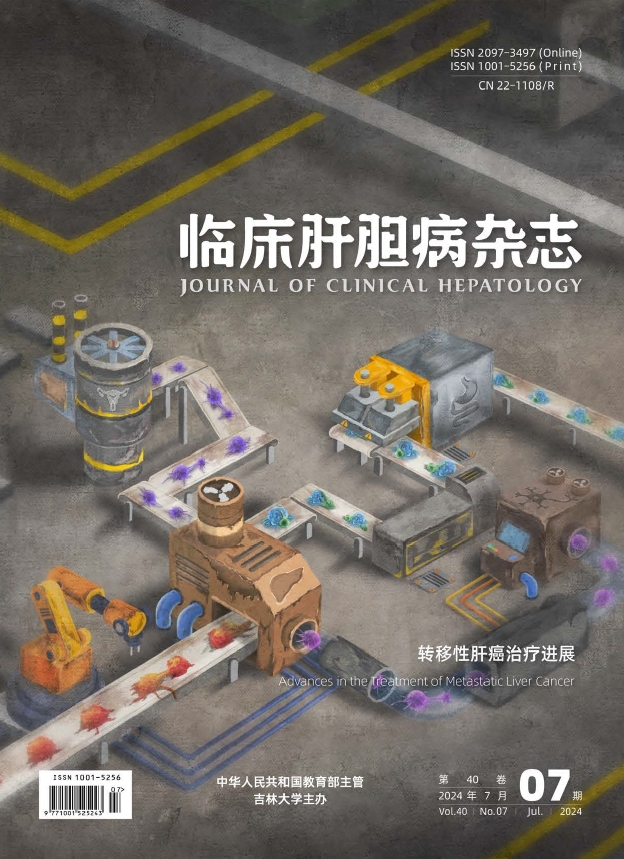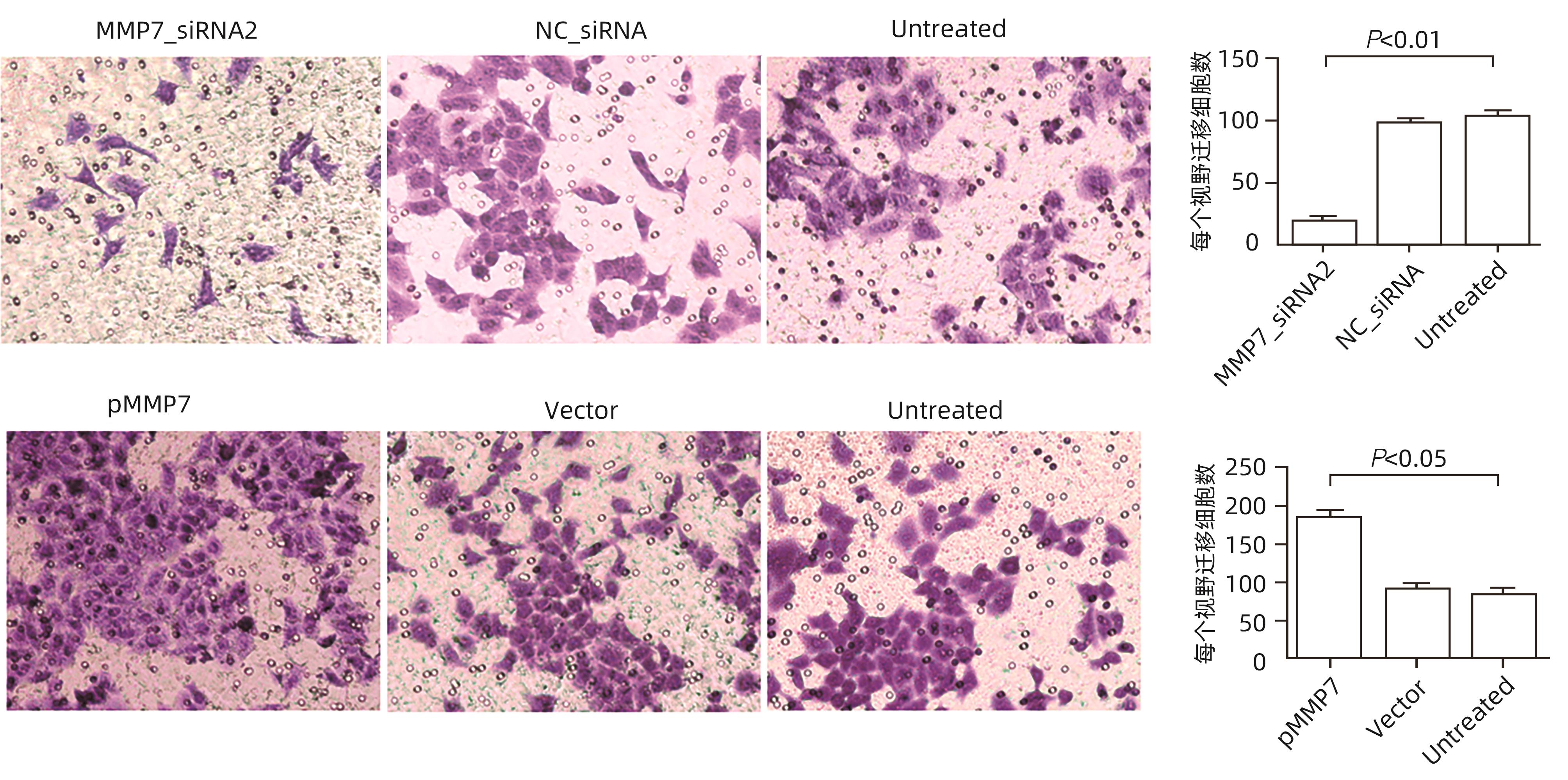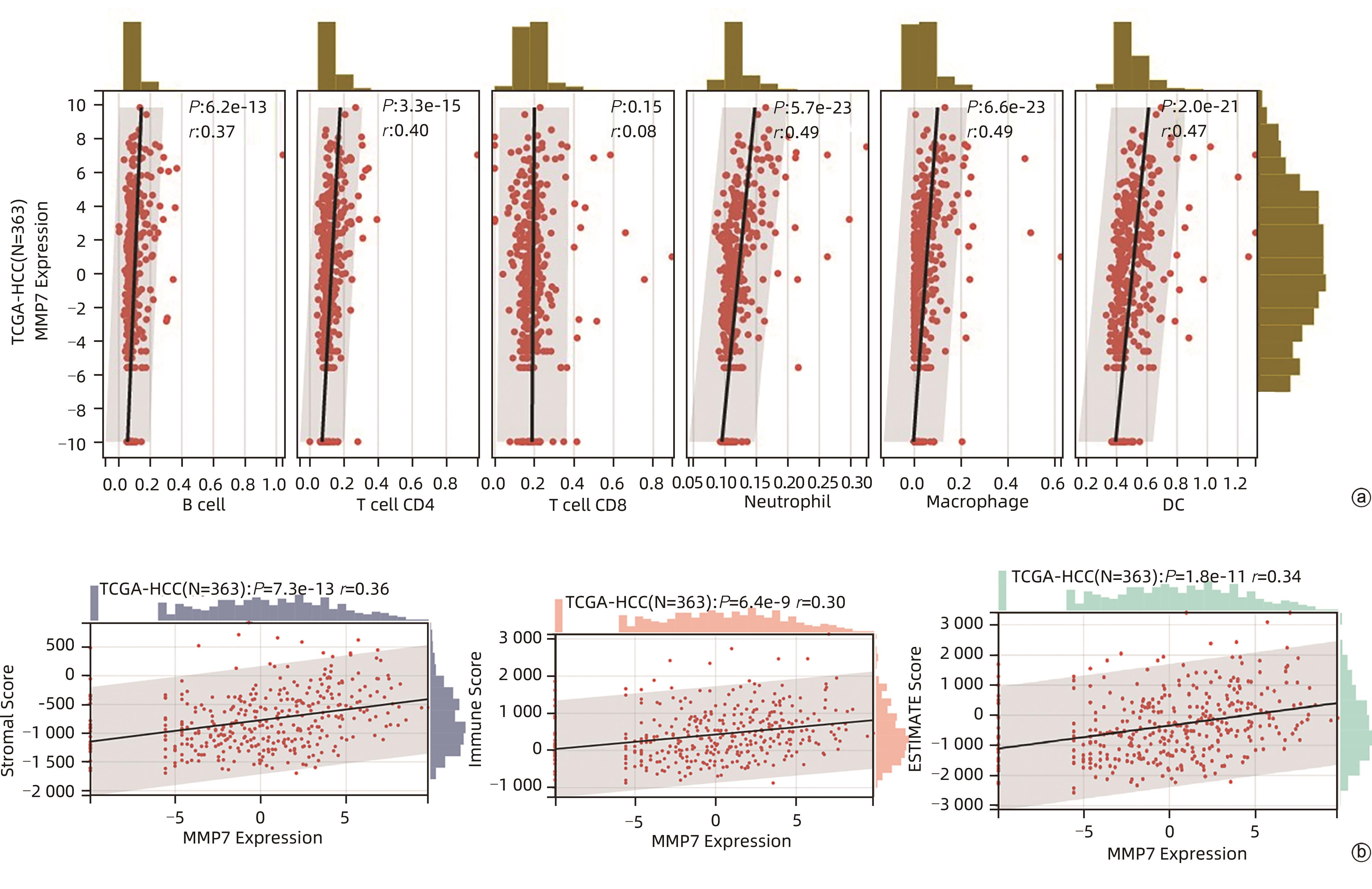| [1] |
SUNG H, FERLAY J, SIEGEL RL, et al. Global cancer statistics 2020: GLOBOCAN estimates of incidence and mortality worldwide for 36 cancers in 185 countries[J]. CA Cancer J Clin, 2021, 71( 3): 209- 249. DOI: 10.3322/caac.21660. |
| [2] |
CRISTESCU R, MOGG R, AYERS M, et al. Pan-tumor genomic biomarkers for PD-1 checkpoint blockade-based immunotherapy[J]. Science, 2018, 362( 6411): eaar3593. DOI: 10.1126/science.aar3593. |
| [3] |
THOMPSON SM, CALLSTROM MR, JONDAL DE, et al. Heat stress-induced PI3K/mTORC2-dependent AKT signaling is a central mediator of hepatocellular carcinoma survival to thermal ablation induced heat stress[J]. PLoS One, 2016, 11( 9): e0162634. DOI: 10.1371/journal.pone.0162634. |
| [4] |
MASUZAKI R, YOSHIDA H, TATEISHI R, et al. Hepatocellular carcinoma in viral hepatitis: Improving standard therapy[J]. Best Pract Res Clin Gastroenterol, 2008, 22( 6): 1137- 1151. DOI: 10.1016/j.bpg.2008.11.005. |
| [5] |
HERNANDEZ-GEA V, TOFFANIN S, FRIEDMAN SL, et al. Role of the microenvironment in the pathogenesis and treatment of hepatocellular carcinoma[J]. Gastroenterology, 2013, 144( 3): 512- 527. DOI: 10.1053/j.gastro.2013.01.002. |
| [6] |
CHEN JF, LU XL, ZHANG XY, et al. Expression and clinical significance of matrix metalloproteinase 7 and heparan sulfate proteoglycan 2 in pancreatic cancer[J]. J Clin Hepatol, 2023, 39( 9): 2169- 2174. DOI: 10.3969/j.issn.1001-5256.2023.09.020. |
| [7] |
CHEN L, KE XY. MMP7 as a potential biomarker of colon cancer and its prognostic value by bioinformatics analysis[J]. Medicine, 2021, 100( 9): e24953. DOI: 10.1097/MD.0000000000024953. |
| [8] |
LI XF, AIERKEN ALD, SHEN L. IPO5 promotes malignant progression of esophageal cancer through activating MMP7[J]. Eur Rev Med Pharmacol Sci, 2020, 24( 8): 4246- 4254. DOI: 10.26355/eurrev_202004_21004. |
| [9] |
GOBIN E, BAGWELL K, WAGNER J, et al. A pan-cancer perspective of matrix metalloproteases(MMP) gene expression profile and their diagnostic/prognostic potential[J]. BMC Cancer, 2019, 19( 1): 581. DOI: 10.1186/s12885-019-5768-0. |
| [10] |
DING XX, ZHU QG, ZHANG SM, et al. Precision medicine for hepatocellular carcinoma: Driver mutations and targeted therapy[J]. Oncotarget, 2017, 8( 33): 55715- 55730. DOI: 10.18632/oncotarget.18382. |
| [11] |
LI TW, FAN JY, WANG BB, et al. TIMER: A web server for comprehensive analysis of tumor-infiltrating immune cells[J]. Cancer Res, 2017, 77( 21): e108- e110. DOI: 10.1158/0008-5472.CAN-17-0307. |
| [12] |
XU WX, ZHANG J, HUA YT, et al. An integrative pan-cancer analysis revealing LCN2 as an oncogenic immune protein in tumor microenvironment[J]. Front Oncol, 2020, 10: 605097. DOI: 10.3389/fonc.2020.605097. |
| [13] |
GTEX CONSORTIUM. The genotype-tissue expression(GTEx) project[J]. Nat Genet, 2013, 45( 6): 580- 585. DOI: 10.1038/ng.2653. |
| [14] |
SHEN W, SONG Z, ZHONG X, et al. Sangerbox: A comprehensive, interaction-friendly clinical bioinformatics analysis platform[J]. Imeta, 2022, 1( 3): e36. https://doi.org/10.1002/imt2.36 DOI: 10.1002/imt2.36 |
| [15] |
AJUCARMELPRECILLA A, PANDI J, DHANDAPANI R, et al. In silico identification of hub genes as observing biomarkers for gastric cancer metastasis[J]. Evid Based Complement Alternat Med, 2022, 2022: 6316158. DOI: 10.1155/2022/6316158. |
| [16] |
RAJENDRAN L, IVANICS T, CLAASEN MP, et al. The management of post-transplantation recurrence of hepatocellular carcinoma[J]. Clin Mol Hepatol, 2022, 28( 1): 1- 16. DOI: 10.3350/cmh.2021.0217. |
| [17] |
YANG JD, HAINAUT P, GORES GJ, et al. A global view of hepatocellular carcinoma: Trends, risk, prevention and management[J]. Nat Rev Gastroenterol Hepatol, 2019, 16( 10): 589- 604. DOI: 10.1038/s41575-019-0186-y. |
| [18] |
LEOWATTANA W, LEOWATTANA T, LEOWATTANA P. Systemic treatment for unresectable hepatocellular carcinoma[J]. World J Gastroenterol, 2023, 29( 10): 1551- 1568. DOI: 10.3748/wjg.v29.i10.1551. |
| [19] |
ZAVADIL J, ROHAN T, JURÁČEK J, et al. Biomarkers as prognostic and predictive factors in patients with hepatocellular carcinoma undergoing radiological oncological interventions[J]. Klin Onkol, 2023, 36( 2): 104- 111. DOI: 10.48095/ccko2023104. |
| [20] |
ZHANG JF, ZHANG J. Research progress on diagnosis and treatments for microvascular invasion of hepatocellular carcinoma[J/CD]. Chin J Hepat Surg(Electronic Edition), 2022, 11( 1): 104- 108. DOI: 10.3877/cma.j.issn.2095-3232.2022.01.022. |
| [21] |
SZARVAS T, CSIZMARIK A, VÁRADI M, et al. The prognostic value of serum MMP-7 levels in prostate cancer patients who received docetaxel, abiraterone, or enzalutamide therapy[J]. Urol Oncol, 2021, 39( 5): 296. DOI: 10.1016/j.urolonc.2020.09.005. |
| [22] |
TREGUNNA R. Serum MMP7 levels could guide metastatic therapy for prostate cancer[J]. Nat Rev Urol, 2020, 17( 12): 658. DOI: 10.1038/s41585-020-00396-3. |
| [23] |
DU F, FENG WB, CHEN S, et al. Sex determining region Y-box 12(SOX12) promotes gastric cancer metastasis by upregulating MMP7 and IGF1[J]. Cancer Lett, 2019, 452: 103- 118. DOI: 10.1016/j.canlet.2019.03.035. |
| [24] |
JAFFAR J, WONG M, FISHBEIN GA, et al. Matrix metalloproteinase-7 is increased in lung bases but not apices in idiopathic pulmonary fibrosis[J]. ERJ Open Res, 2022, 8( 4): 00191- 02022. DOI: 10.1183/23120541.00191-2022. |
| [25] |
SANG HY, WU S, CHEN XF, et al. FAM46B suppresses proliferation, migration and invasion of non-small cell lung cancer via β-catenin/MMP7 signaling[J]. Transl Cancer Res, 2019, 8( 4): 1497- 1505. DOI: 10.21037/tcr.2019.07.27. |
| [26] |
RONG WQ, ZHANG Y, YANG L, et al. Post-surgical resection prognostic value of combined OPN, MMP7, and PSG9 plasma biomarkers in hepatocellular carcinoma[J]. Front Med, 2019, 13( 2): 250- 258. DOI: 10.1007/s11684-018-0632-1. |
| [27] |
YE LT, KRIEGL L, REITER FP, et al. Prognostic significance and functional relevance of olfactomedin 4 in early-stage hepatocellular carcinoma[J]. Clin Transl Gastroenterol, 2020, 11( 1): e00124. DOI: 10.14309/ctg.0000000000000124. |
| [28] |
HE XX, SHI LL, QIU MJ, et al. Molecularly targeted anti-cancer drugs inhibit the invasion and metastasis of hepatocellular carcinoma by regulating the expression of MMP and TIMP gene families[J]. Biochem Biophys Res Commun, 2018, 504( 4): 878- 884. DOI: 10.1016/j.bbrc.2018.08.203. |
| [29] |
LIAO LJ, DUAN DY, LIU YF, et al. LHPP inhibits hepatocellular carcinoma cell growth and metastasis[J]. Cell Cycle, 2020, 19( 14): 1846- 1854. DOI: 10.1080/15384101.2020.1783472. |
| [30] |
JEGGO PA, PEARL LH, CARR AM. DNA repair, genome stability and cancer: A historical perspective[J]. Nat Rev Cancer, 2016, 16( 1): 35- 42. DOI: 10.1038/nrc.2015.4. |
| [31] |
CHATTERJEE A, RODGER EJ, ECCLES MR. Epigenetic drivers of tumourigenesis and cancer metastasis[J]. Semin Cancer Biol, 2018, 51: 149- 159. DOI: 10.1016/j.semcancer.2017.08.004. |
| [32] |
CHEN F, FAN YM, CAO PX, et al. Pan-cancer analysis of the prognostic and immunological role of HSF1: A potential target for survival and immunotherapy[J]. Oxid Med Cell Longev, 2021, 2021: 5551036. DOI: 10.1155/2021/5551036. |
| [33] |
XU ZH, HE CY, FANG XD. Research progress in relationship between mitochondrial inner membrane mitochondrial protein and tumor[J]. J Jilin Univ(Med Edit), 2023, 49( 1): 231- 236. DOI: 10.13481/j.1671-587X.20230131. |
| [34] |
LI TW, FU JX, ZENG ZX, et al. TIMER2.0 for analysis of tumor-infiltrating immune cells[J]. Nucleic Acids Res, 2020, 48( W1): W509- W514. DOI: 10.1093/nar/gkaa407. |
| [35] |
ANGELOVA M, CHAROENTONG P, HACKL H, et al. Characterization of the immunophenotypes and antigenomes of colorectal cancers reveals distinct tumor escape mechanisms and novel targets for immunotherapy[J]. Genome Biol, 2015, 16( 1): 64. DOI: 10.1186/s13059-015-0620-6. |
| [36] |
LEE N, ZAKKA LR, MIHM MC Jr, et al. Tumour-infiltrating lymphocytes in melanoma prognosis andcancerimmunotherapy[J]. Pathology, 2016, 48( 2): 177- 187. DOI: 10.1016/j.pathol.2015.12.006. |
| [37] |
DENKERT C, VON MINCKWITZ G, DARB-ESFAHANI S, et al. Tumour-infiltrating lymphocytes and prognosis in different subtypes of breast cancer: A pooled analysis of 3771 patients treated with neoadjuvant therapy[J]. Lancet Oncol, 2018, 19( 1): 40- 50. DOI: 10.1016/S1470-2045(17)30904-X. |
| [38] |
GALON J, BRUNI D. Approaches to treat immune hot, altered and cold tumours with combination immunotherapies[J]. Nat Rev Drug Discov, 2019, 18( 3): 197- 218. DOI: 10.1038/s41573-018-0007-y. |
| [39] |
ZHAO YD, SCHAAFSMA E, GORLOV IP, et al. A leukocyte infiltration score defined by a gene signature predicts melanoma patient prognosis[J]. Mol Cancer Res, 2019, 17( 1): 109- 119. DOI: 10.1158/1541-7786.MCR-18-0173. |
| [40] |
MCGRANAHAN N, SWANTON C. Clonal heterogeneity and tumor evolution: Past, present, and the future[J]. Cell, 2017, 168( 4): 613- 628. DOI: 10.1016/j.cell.2017.01.018. |
| [41] |
WEI GG, ZHANG HL, ZHAO HP, et al. Emerging immune checkpoints in the tumor microenvironment: Implications for cancer immunotherapy[J]. Cancer Lett, 2021, 511: 68- 76. DOI: 10.1016/j.canlet.2021.04.021. |
| [42] |
ZHANG YY, ZHANG ZM. The history and advances in cancer immunotherapy: Understanding the characteristics of tumor-infiltrating immune cells and their therapeutic implications[J]. Cell Mol Immunol, 2020, 17( 8): 807- 821. DOI: 10.1038/s41423-020-0488-6. |
| [43] |
MURCIANO-GOROFF YR, WARNER AB, WOLCHOK JD. The future of cancer immunotherapy: Microenvironment-targeting combinations[J]. Cell Res, 2020, 30( 6): 507- 519. DOI: 10.1038/s41422-020-0337-2. |








 DownLoad:
DownLoad:




